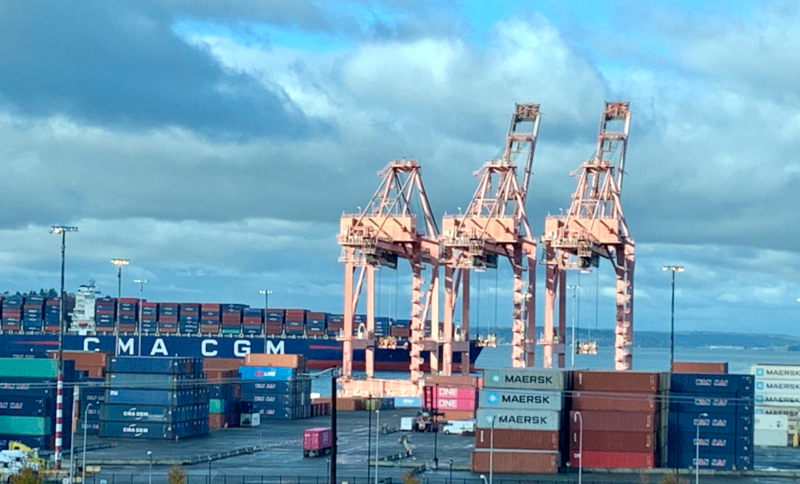Imports at the nation’s major retail container ports set a new record this spring and are expected to see near-record volume this month as retailers bring in merchandise ahead of rising costs and further supply chain issues, according to the monthly Global Port Tracker report released last week by the National Retail Federation and Hackett Associates.
“Retailers are importing record amounts of merchandise to meet consumer demand, but they also have an incentive to stock up before inflation can drive costs higher,” NRF vice president for supply chain and customs policy Jonathan Gold said in a statement announcing the new record. “Whether it’s freight costs or the wholesale cost of merchandise, money retailers save is money that can be used to hold down prices for their customers during a time of inflation. In addition, retailers are preparing for any potential disruptions because of the West Coast port labor negotiations, which are set to begin next week. NRF has previously encouraged the parties to remain at the table and not engage in disruptions if a new contract is not reached by the time the current agreement expires July 1.”
U.S. ports covered by Global Port Tracker handled 2.34 million Twenty-Foot Equivalent Units — one 20-foot container or its equivalent — in March, the latest month for which final numbers are available. That was up 10.8% from February and up 3.2% year over year. It also topped the previous record of 2.33 million TEU set in May 2021 for the number of containers imported in a single month since NRF began tracking imports in 2002
Ports have not yet reported April numbers, but Global Port Tracker projected the month at 2.27 million TEU, up 5.7% from last year. May is forecast at 2.3 million TEU, which would be down 1.4% from last year but nonetheless the third-highest level on record.
“Consumer spending is growing faster than income growth, perhaps as shoppers buy ahead of expected rising prices,” Hackett Associates founder Ben Hackett said. “Importers are doing much the same as they continue to replenish their inventories. Doing so will protect them against potentially rising freight costs, further delays in the supply chain and complications in upcoming labor negotiations at U.S. West Coast ports.”
June is forecast at 2.29 million TEU, up 6.6% from last year; July at 2.31 million TEU, up 5.3%; August at 2.29 million TEU, up 0.9%, and September at 2.15 million TEU, up 0.3%.
The first six months of 2022 are expected to total 13.5 million TEU, up 5.1% year over year. Imports for all of 2021 totaled 25.8 million TEU, a 17.4% increase over 2020’s previous annual record of 22 million TEU.
How to build a stronger and more sustainable supply chain will be addressed as retailers, industry experts and technology innovators meet at the NRF Supply Chain 360 conference in Cleveland in June.
Global Port Tracker, which is produced for NRF by Hackett Associates, provides historical data and forecasts for the U.S. ports of Los Angeles/Long Beach, Oakland, Seattle and Tacoma on the West Coast; New York/New Jersey, Port of Virginia, Charleston, Savannah, Port Everglades, Miami and Jacksonville on the East Coast, and Houston on the Gulf Coast. The report is free to NRF retail members, and subscription information is available here or by calling 202-783-7971. Subscription information for non-members can be found here.



.JPG.small.400x400.jpg)

